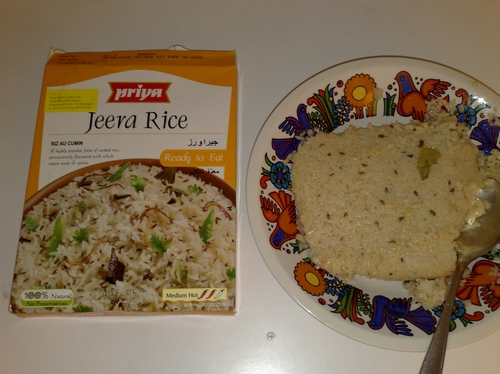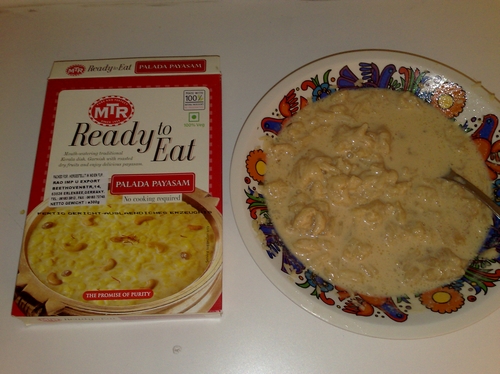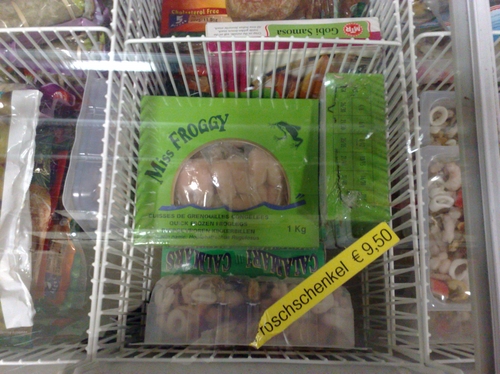New year’s resolutions are supposed to be made – and then quickly forgotten.
I can’t even remember if it was a new year’s resolution, but it’s January 2009 now and the wife (“she”) said we’d have to go on a diet. South-Beach Diet.
If you’re married or at least engaged, you’ll know that wise men never oppose a female decision (but instead wait for them to remorse on their own). This especially applies to those poor fellows who are married to Thatcheresque characters.
The painful truth is that she’s right. We both urgently need to lose weight – not because we’d been surviving on junk food only (she’s vegetarian anyways), but because food in Germany is just more than nutritious. Whenever I am in Kenya, I lose weight. But here in Germany, it’s just massive. And then all these sweets!
Sweets, dear readers, are one of the two fine reasons why I like German food (the other is Bavarian Leberkäse). And not only packaged Haribo winegums and liquorice, but also fresh cakes from a bakery:

Choice 2.0
Now compare that with the usual “variety” of marble cakes as found in the average Kenyan supermarket. What a difference and sweet temptation!
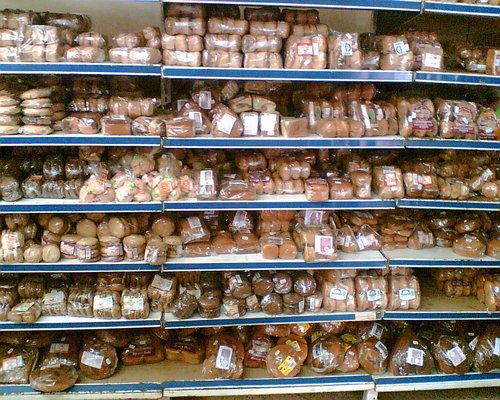
Choice 1.0
Ati? Do I hear you longing for the typical BlueBand (instead of butter) “butter” cream cake?
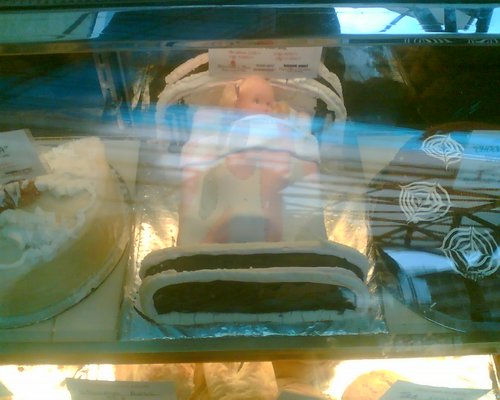
The strange Barbie cake found in Nbo the other day
See? That’s the dilemma now. Living in a country where the sweets section alone can fill up a whole supermarket and even provides a bigger variety than the usual and rather boring marble & butter cream cakes as found in ex British colonies (sorry, but I blame this heritage purely on the British inability & disinterest in cooking & baking), you’ll quickly end up eating too many sweets. Just because they are readymade food and can be eaten quickly. And of course because I love sweets.
Other members of the extended family already tested this diet – or let’s say: change of diet, and it worked quite well for them. You’re basically not allowed to eat any bad carbohydrates during the first two weeks, which obviously also includes sugar, bread, potatoes and so on. The list of the NO-GOs is actually quite long – the one of those things you’re allowed to eat rather short.
As you may know or not know: Germans love to have a sweet breakfast (e.g. bread with jam), so this diet requires her to switch to scrambled eggs and bacon instead (ok, this is what I like about UK kitchen at least).
As for lunch and dinner, we’ve so far prepared vegetable dishes based on chickpeas, eggplant, garlic and sometimes even meat (for me, not for her). The meat part actually is quite nice because I didn’t have a proper steak until Xmas and until my good old ex-vegetarian sister Zora recently informed me she’d switched to being a carnivore. @Zora – in case you’re reading this: see how your actions influence my life! :-)
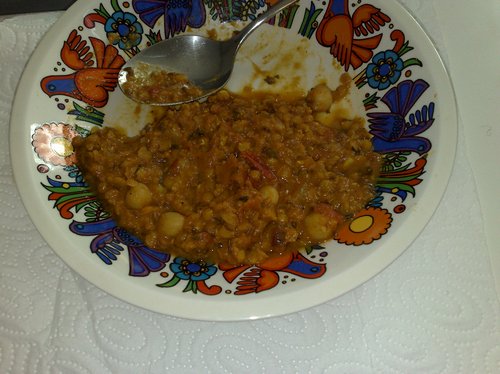
A snapshot I’d already twitpic’d: looks like Githeri to me, bila potatoes and beans. That’s dal fry, actually. Lentils + onions + tomatoes + some chick peas + curry. Delicious!
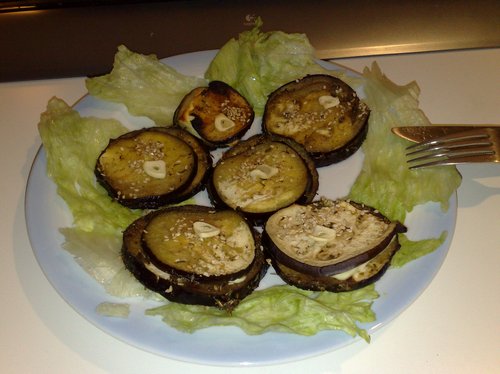
Eggplant/Aubergine with Turkish cheese and garlic + sesame. Grilled in the oven. This really is a perfect dish anyone can prepare within a few minutes.
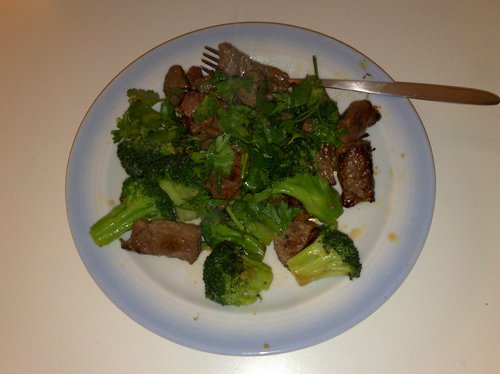
Some kind of steak I’d cut into pieces because I wasn’t sure about its age (@intelligensia see “Rost and mboilo”, p.46 , “How to be a Kenyan”). Next time I will just choma this kabisa in the grill. Love the fresh broccoli though, very al dente (mushy food is a no-go except for Irio). I shall have even more meat during the coming weeks. Yay!
—–
Other, food related matters that are worth mentioning and actually require their own post is Vegefarm – a vegan/vegetarian restaurant opened by very good friends of mine in Bremen – a city in Northern Germany.
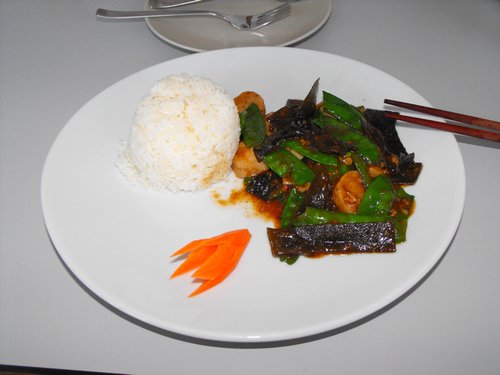
What they do is serving special dishes that almost taste like real meat or fish, but are purely based on gluten, tofu and shitake mushrooms and probably also other vegan ingredients. Quite SE Asian – they used to have a Chinese restaurant (already serving vegan dishes back then) but have since switched to this cuisine only. And best of all is that you can order these fake meat and fish balls based on Tofu & Co. online. I’d seen them importing these directly from Taiwan some years ago, so it’s extremely nice to see them coming up with a full restaurant these days that only serves such dishes.
Those dark green “leaves” on the image above are algae from the sea – and since I grew up on Japanese food, I really, really love the taste of this green seaweed.
—–
Yes – that’s about it so far. From seaweed to ugali na sukuma to sweets. And there you go wondering why I’d gained weight.
Interestingly though, and the intial reason for blogging all of this: it seems that if you want to survive on staple food only (starch), you’ll pay much less. Try to find decent (!) vegetable during winter season in Europe and you’ll quickly realize that the only place where vegetaboools taste like having grown under the sun (and not in some artificial greenhouse in Spain) is among Turkish supermarkets, next to those Afroshops downtown.
Of course, once I’m done and have lost my targeted 10kgs (hey..easy!), I will have to start my Leberkaese business idea in Kenya :-) Serving tasty meat snacks to commuters – how’s that for a change?
p.s.: I consider this post part of my lifelong Bantu-food-bashing-meme which aims at spreading Swahili food culture from the Kenyan coast to all parts of Central Kenya. Eh!

